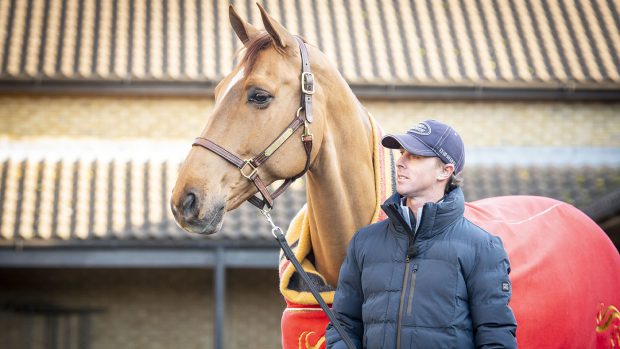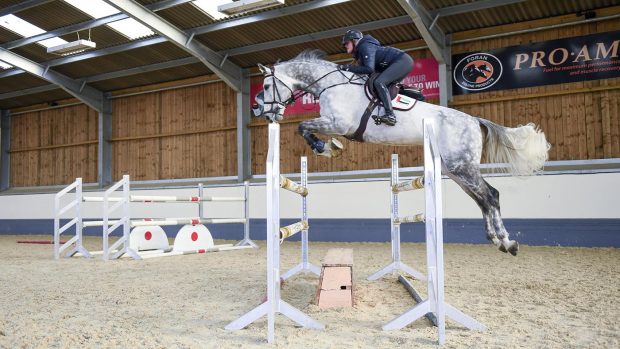Q: I am a small rider and I ride quite a large horse (16.2hh). He is a fantastic jumper, but I find it difficult to shorten his stride for doubles and trebles. He tends to run on, sometimes even taking a stride out, and knocks down the second or third element. I ride him in a three-ring gag snaffle, which he goes nicely in.Are there any exercises I can do to help shorten his stride?
SJ trainer John Smart replies: “Try the following exercise, which will enable you to work on your own technique as well as that of your horse.
You will need three sets of uprights or wings and eight poles. Start with a placing pole 9ft (2.7m) in front of a 2ft (.61m) jump, with a landing pole 11ft 6in (3.5m) after it. Canter over the set-up, trying to think of it simply as cantering over poles, not as a jumping exercise.
When your horse will do this calmly, add another 2ft-high jump 42-45ft (12.8-13.7m) – depending on your horse’s stride – away from the first jump, with another placing pole 10ft (3m) in front of the second jump. This will give you three non-jumping canter strides (two of them over poles) between the two elements.
Finally, when you are both happy with this, you can introduce a back pole to the last element, and make it higher and wider to suit yourselves. Approach the last fence at the same speed you went to the first fence, and avoid getting longer and faster at each element. This exercise should help establish a calm, balanced rhythmical canter when jumping.
In your flatwork, practise rounding and lengthening the trot and canter. When finally you put these exercises together, your horse ought to be more between the leg and hand.



